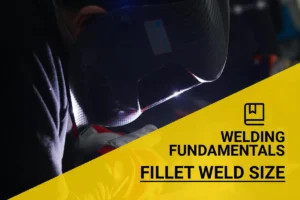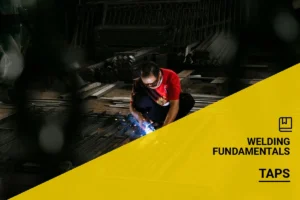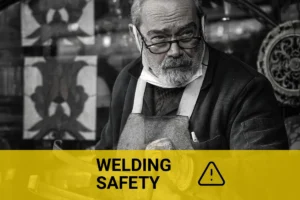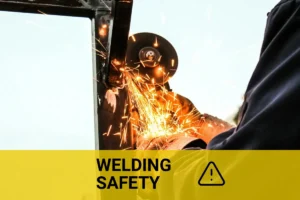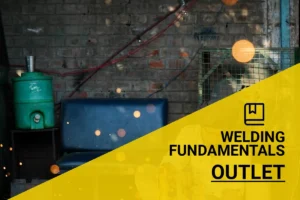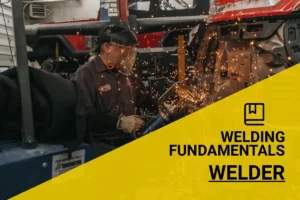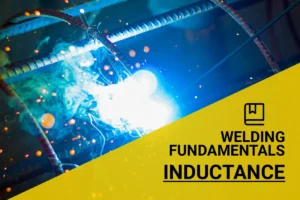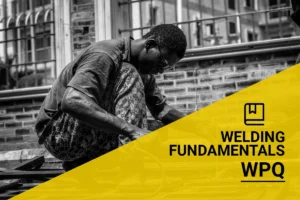What is Thermite Welding? Learn Its Process, Uses, and Types.
Published on: May 8, 2025 | Last modified: March 4, 2025
By: Joe Carter
Thermite is a mixture of metal powder and metal oxide, most commonly aluminum and iron oxide. When ignited, it burns at extremely high temperatures, reaching over 2,500 °C (4,500 °F).
I regularly hear the question, what is thermite welding? This process is crucial because it offers a strong, durable bond in rail and metal joining. When I’ve used it, I’ve seen how effectively it fuses metal pieces together, ensuring they withstand significant stress.
In this guide, you’ll learn about thermite welding, how it works, different types, the steps for performing it, factors that influence its success, how to address common problems, and aftercare tips. We’ll also explore the use cases of thermite welding and alternatives. Plus, we’ll discuss related concepts like how to make thermite for welding and what is thermal welding.
Contents
- What is Thermite Welding?
- How Does Thermite Welding Work?
- Types Of Thermite
- Steps for Performing Thermite Welding
- Factors Influencing Thermite Welding
- How to Address Common Problems
- Aftercare, Inspection, and Advanced Tips for Thermite Welding
- Thermite Welding Applications in Different Industries
- Exploring Alternatives to Thermite Welding
- Frequently Asked Questions (FAQs)
- Conclusion
- Additional Reading
What is Thermite Welding?
Thermite welding is a process that uses a chemical reaction to create intense heat, melting metal. Typically, it joins steel rail tracks or large metal components. It’s popular because it’s efficient, reliable, and produces strong welds.
How Does Thermite Welding Work?
Thermite welding is a process that joins metals through a chemical reaction. It involves a mixture of aluminum powder and a metal oxide, such as iron(III) oxide (Fe2o3). When ignited, this mixture generates about 2,500 °C (4,500 °F) of heat. This extreme heat melts the base metals, allowing them to fuse into a solid joint.
In thermite welding, the molten metal fills gaps and creates a strong bond, making it ideal for heavy loads. It’s commonly used for railway tracks and large construction projects. This method requires minimal equipment but has a high success rate and durability.
Thermite welding is effective for heavy-duty applications. It provides a sturdy, permanent bond that withstands intense pressure. Based on my experience, this method simplifies large metal repairs and significantly reduces setup time compared to traditional welding methods.
Types Of Thermite
What are the types of thermite welding?
Aluminum Thermite
Aluminum thermite uses aluminum powder for the reaction. It’s crucial for welding by creating high temperatures. To use aluminum thermite, mix aluminum powder with a metal oxide, ignite it, and let the reaction generate molten metal to join your workpieces.
Magnesium Thermite
Magnesium thermite combines magnesium powder with a metal oxide. This type also produces intense heat, essential for welding. To weld with magnesium thermite, mix the powders, initiate the reaction, and let the molten metal flow where it’s needed to create a strong bond.
Iron Thermite
Iron thermite primarily uses iron oxide and aluminum powder. It generates enough heat to melt iron, making it suitable for heavy-duty applications. To apply iron thermite, blend the compounds, ignite the mix, and let the result weld your iron components together seamlessly.
Calcium Thermite
Calcium thermite involves calcium oxide and aluminum powder. It creates significant temperatures, enabling work with sturdier metals. To execute calcium thermite welding, combine the materials, activate the reaction, and pour the resulting metal to efficiently join your parts.
Sodium Thermite
Sodium thermite integrates sodium oxide and aluminum powder to achieve high temperatures. It’s less common but useful in specific settings. To perform sodium thermite welding, mix the ingredients, ignite them, and let the reaction provide the molten metal needed for effective bonding.
That covers the various types of thermite. Let’s now take a look at the steps for performing thermite welding.
Steps for Performing Thermite Welding
Now, we’ll cover the steps of thermite welding. Follow them all for the best results.
Preparation Of the Workpieces
First, clean the surfaces of the workpieces. Remove any dirt, rust, or paint to ensure proper bonding. The area must be free from contaminants for optimal results. I can’t stress how crucial this step is; even a little debris can weaken the weld. In addition to preparation, understanding the specifics of your welding materials can improve your outcomes, such as calculating the number of welding rods needed for your project.
Assembly Of the Thermite Mixture
Mix the thermite ingredients in a well-ventilated area. This mixture typically includes aluminum powder and iron oxide in a 1:3 ratio for strong reactions. Ensure granule sizes are uniform; using finer particles improves performance. Pre-measure the amounts needed to avoid mistakes during the burning process.
Ignition Of the Thermite Reaction
Carefully ignite the thermite mixture. Use a magnesium ribbon with a burn time of around 3 minutes to ensure complete ignition. The temperature can exceed 2500°C (4532°F), so stay vigilant! I can’t stress how important it is to maintain a safe distance during this step; molten metal can splatter.
Pouring Of the Molten Metal
Once the thermite reaction begins, pour the molten metal into the prepared joint area. Let it flow carefully to avoid air pockets, which can weaken the weld joint. Pour within a few seconds to maintain an optimal temperature—below 204°C (400°F)—for sealing. Proper timing can mean the difference between success and failure.
Cooling and Solidification
Finally, let the weld cool naturally. Don’t rush this step; it typically takes at least 30 minutes. Rapid cooling can cause cracks or weak spots due to thermal shock. Once it solidifies, inspect for integrity to confirm good weld quality. To fully grasp the nuances of the field, consider exploring different types of welding.
You should now have a good understanding of the thermite welding process and its procedures. In the next part, we’ll discuss the factors impacting thermite welding.
Factors Influencing Thermite Welding
What factors affect thermite welding? These variables shape the process and outcome.
Material Composition
The materials being joined must be compatible. For effective thermite welding, you typically use metals like rail steel, which has a carbon content of about 0.6% to 0.7% for optimal results.
Welding Environment
The surrounding environment plays a critical role. Factors like wind speed and moisture can significantly impact weld quality, with winds over 15 km/h possibly leading to poor outcomes due to heat dispersion. Knowing the capabilities of your welding equipment is equally important; for example, understanding how thick a Lincoln 140 can weld can guide your project decisions.
Thermite Composition
The thermite formula affects the reaction temperature. Typically, aluminum powder is mixed with iron oxide in a 3:8 ratio, generating intense heat of around 2500°C (4500°F). Variations in this mix can alter weld integrity.
Reaction Temperature
The high temperature from thermite welding creates molten steel. The ideal temperature is around 2500°C (4500°F), allowing for metal fusion. A lower temperature may not melt the workpieces effectively, weakening the joints.
An important aspect to consider is the presence of dross, which can affect the quality of the weld. For more information on this, see what is dross in welding.
Joint Preparation
Proper joint preparation is essential. The surfaces must be clean and fit tightly, ensuring a strong bond. A gap larger than 1 mm can significantly reduce weld strength.
We covered the factors influencing thermite welding. Next, we will discuss how to tackle common issues.
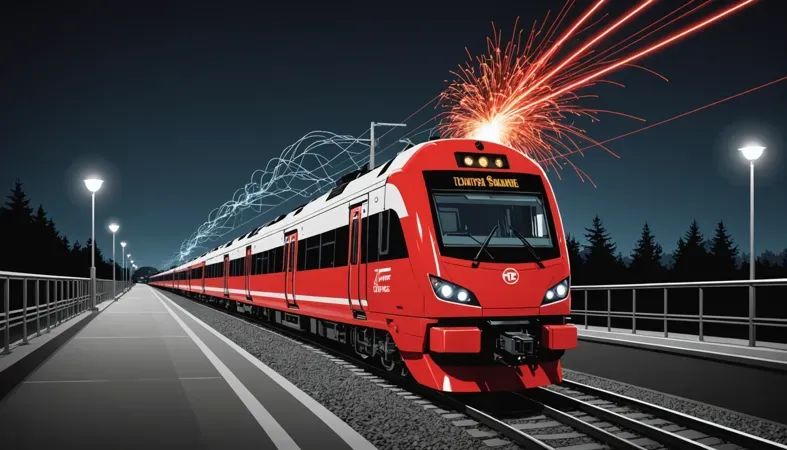
How to Address Common Problems
Let’s look at unique issues associated with thermite welding.
Inadequate Joint Fusion
With thermite, insufficient heat can lead to poor fusion. Check for cracks or separations in the weld. Increase the reactants’ ratio to boost heat generation.
Improper Reaction Control
It’s critical to maintain proper reactant ratios in thermite. Use calipers to measure them accurately. If the reaction feels uneven, adjust your powder blend for a consistent mix.
Contamination Issues
Thermite’s effectiveness drops with contaminants like moisture or foreign materials. Look for discoloration or jagged lines. Use a clean, dry workspace and store materials in airtight containers.
Insufficient Heat Generation
Thermite’s heat must exceed 2500°C (4500°F) to work. If you see a weak glow, you’re not there. Use high-quality reactants and check the ignition method for effectiveness.
Cooling Rate Management
Cooling too fast with thermite risks cracking. Inspect for surface fractures to identify issues. Cover welds with a thermal blanket to control heat loss during cooldown.
We covered common issues in thermite welding, including solutions and strategies. Next, we will discuss aftercare, inspection, and advanced tips.
Aftercare, Inspection, and Advanced Tips for Thermite Welding
Here’s essential guidance on aftercare, inspection, and tips for expert welders working with thermite.
Aftercare Recommendations
After thermite welding, let the joint cool for at least 15 minutes to avoid warping in the weld and surrounding material. Use a wire brush to remove any oxide slag within an hour to prevent corrosion and maintain quality.
Inspection Considerations
Inspect for inclusions and cracks right after cooling. Focus on a 30 cm (12 Inch) radius around the weld for signs of heat-affected zone (HAZ) damage. Use ultrasonic testers for accurate readings on weld integrity.
Proper selection depends on factors affecting the electrical conductivity and weld strength. To understand what determines the size of a welding cable, see more details on selecting the correct cable size.
Expert Insights
For experienced users, prevent contamination by keeping the surrounding area clean—aim for a minimum of 1.5 meters (5 Feet). When mixing thermite, maintain the ratio at 3:1 (Aluminum to Iron Oxide) for optimal results. Consider a force-controlled ignition method to enhance safety and consistency.
Thermite Welding Applications in Different Industries
Let’s explore how thermite welding is applied across various fields.
| Industry | Application | Benefits |
|---|---|---|
| Railway | Joining rail tracks | Creates strong joints that can handle high loads and vibrations. |
| Construction | Welding steel beams | Provides durable connections essential for structural integrity. |
| Energy | Connecting copper busbars | Ensures excellent conductivity for efficient power distribution. |
| Aerospace | Joining metal components | Allows for lightweight yet strong joints crucial for aircraft performance. |
| Military | Welding armored vehicles | Delivers exceptionally strong welds capable of withstanding battlefield conditions. |
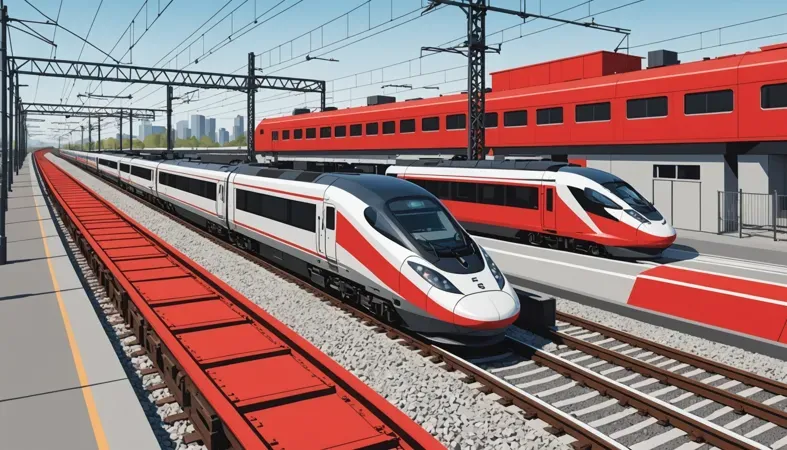
Exploring Alternatives to Thermite Welding
There are alternatives to thermite welding for similar results. Options like Gas Tungsten Arc Welding (GTAW), or MIG (Metal Inert Gas) welding are often preferred. These methods use available equipment and can yield clean welds for various metals while providing better control in tight spaces. From both successes and failures, I’ve learned that while thermite is powerful, techniques like GTAW may produce a stronger, more controlled joint in many cases. It is also essential to consider other welding processes, such as Submerged Arc Welding, that improve productivity and quality in fabrication.
.
Another alternative is brazing, which uses heat to join metals with a filler. Products such as Harris 56 and Stay-Silv provide excellent results with less thermal distortion. I’ve seen how selecting the right method impacts quality, so consider your project’s needs and choose wisely.
Frequently Asked Questions (FAQs)
Now let us look at some common questions I typically get asked.
What is the Thermite Welding Process?
The thermite welding process involves using an exothermic reaction to fuse metals together. In this process, aluminum powder reacts with a metal oxide, producing heat over 2,500°C (4,500°F) to melt the metals. This method is highly effective for joining heavy steel sections, such as rails and structural components.
Is Thermite Welding Still Used?
Yes, thermite welding is still used today, especially for heavy-duty applications. The process is particularly common in railroads and heavy machinery assemblies because it creates strong bonds. It’s known for its reliability and strength, making it a preferred choice in environments that require durability.
Why Are Railroad Tracks Thermite Welded?
Railroad tracks are thermite welded to ensure strong, continuous joints. This method minimizes the risk of track failure and enhances stability while trains are running. Plus, it can effectively join heavy steel rails that can handle immense stress and weight from passing trains.
What Are the Disadvantages Of Thermite Welding?
Thermite welding does have some disadvantages, including the need for precise temperature control. It also requires extensive cleanup post-welding, as the process generates slag. Lastly, it can’t be used effectively on thin materials due to the high heat required for welding.
For a deeper understanding of the technical aspects involved in this process, including interpretation of technical specifications, knowing how to read welding blueprints is essential.
How Does Thermite Welding Work?
Thermite welding works through an exothermic reaction between aluminum powder and metal oxides. This reaction generates intense heat that melts the metals involved, allowing them to fuse when cooled. The process is efficient and often used where high strength is necessary, making it a vital technique in various welding fundamentals.
To explore more about a specific welding system, one might look into GMA welding components.
How to Weld With Thermite?
To weld with thermite, you start by preparing the material surfaces and then setting up the thermite reaction. Once you ignite it, the high temperature of molten metal forms a joint. You ensure proper safety measures are followed as the reaction produces intense heat and molten slag.
Conclusion
Phew, that’s a lot to cover. We discussed what thermite welding is, how it works, types of thermite, steps for performing thermite welding, factors influencing the process, common problems, and aftercare. Plus, we delved into use cases and even looked at alternatives to thermite welding.
So, what is thermite welding? In simple terms, it’s a process where molten steel results from a chemical reaction between aluminum and iron oxide. This reaction produces extremely high temperatures, around 2,500°C (4,532°F) which allows for strong and durable welds. Feel free to reach out if you have further questions about thermite, and let’s keep the conversation going.
If you’ve enjoyed this exploration, consider discovering even more insights and resources available at What is Welding.
Additional Reading
- American Welding Society. (2020). AWS Welding Handbook: Welding Science and Technology (Vol. 1). Miami, FL: AWS.
- International Institute of Welding (IIW): https://www.iiwelding.org
- American Welding Society (AWS): https://www.aws.org
Joe Carter is a retired welding professional with over 40 years of hands-on experience in the industry, spanning ship repair, structural welding, and even underwater projects. Joe is a master of MIG, TIG, and Stick welding. Passionate about mentoring the next generation of welders, Joe now shares his decades of expertise and practical insights to help others build rewarding careers in welding.
American Welding Society, Construction, Industrial Applications, Metal Joining Techniques, Railway Welding, Structural Integrity, Thermite Types, Thermite Welding, Welding, Welding Equipment, Welding Process
